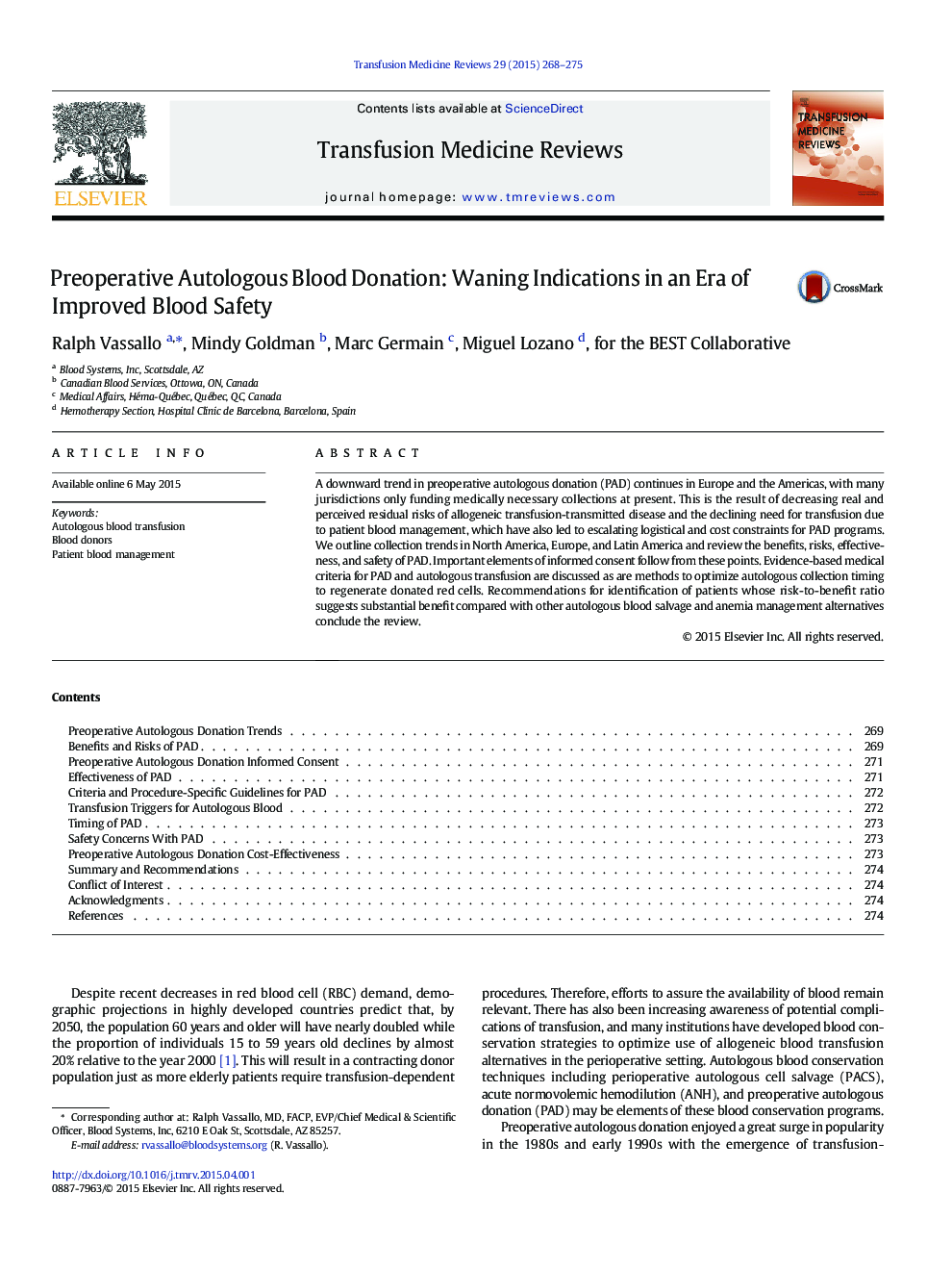| Article ID | Journal | Published Year | Pages | File Type |
|---|---|---|---|---|
| 3336491 | Transfusion Medicine Reviews | 2015 | 8 Pages |
•Preoperative autologous donation (PAD) is declining in Europe and the Americas.•Red cell regeneration requires 4 weeks, so optimal timing of PAS is challenging.•Mathematical modeling shows PAD as less efficient and effective than cell salvage.•Alternatives to PAD are available and preferable to poorly timed PAD.•Increasingly, health systems are limiting PAD to medically indicated scenarios.
A downward trend in preoperative autologous donation (PAD) continues in Europe and the Americas, with many jurisdictions only funding medically necessary collections at present. This is the result of decreasing real and perceived residual risks of allogeneic transfusion-transmitted disease and the declining need for transfusion due to patient blood management, which have also led to escalating logistical and cost constraints for PAD programs. We outline collection trends in North America, Europe, and Latin America and review the benefits, risks, effectiveness, and safety of PAD. Important elements of informed consent follow from these points. Evidence-based medical criteria for PAD and autologous transfusion are discussed as are methods to optimize autologous collection timing to regenerate donated red cells. Recommendations for identification of patients whose risk-to-benefit ratio suggests substantial benefit compared with other autologous blood salvage and anemia management alternatives conclude the review.
